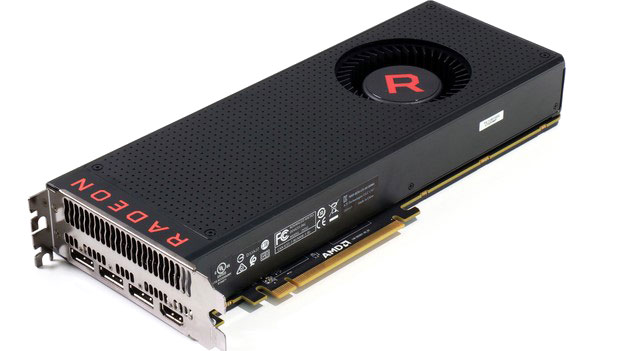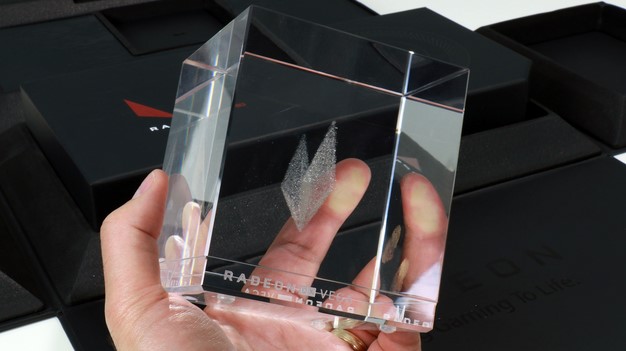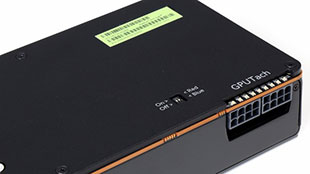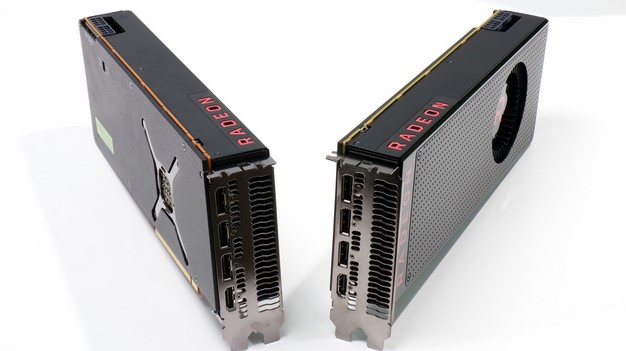Radeon RX Vega 64 And RX Vega 56 Review: AMD Back In High-End Graphics
AMD Radeon RX Vega 64 And 56 - All You Need To Know
Today is the day AMD's Radeon Technologies Group has been working towards for a long time. The official launch of the Radeon RX Vega is here, and it's now time for AMD RTG's moment in the spotlight. Advanced Micro Devices (NASDAQ:AMD) has been on a tear as of late; the desktop and server processor group executed successful launches of its Ryzen desktop processor, EPYC server platform, and finally the big bang last week with its Ryzen Threadripper enthusiast 12- and 16-core processors, which were met with high praise. Ryzen, EPYC and Threadripper are tough acts to follow, just ask Intel. So too is AMD's rival NVIDIA's GeForce GTX 10 series, with desktop graphics cards like the GeForce GTX 1080 soaking up market share. But if AMD's CPU team can take on the likes of Skylake-X, RTG ought to be able to take on GeForce 10, right? That's the 64-thousand dollar question (pun intended) we know you're all here to find out the answer to.

AMD Radeon RX Vega 64

AMD Radeon Vega RX Line-Up
Today, AMD is announcing three base card specs to market, but there will be four cards total with a Limited Edition air-cooled card not represented here, with the same Vega 64 specs you see above. Three of the cards have 64 NGCs (Next Generation Compute Units) with 4096 stream processors, while Radeon RX Vega 56 is comprised of 56 NCGs with 3584 SPs. Base clocks range from roughly 1150 to 1400MHz, with boost clocks from 1470MHz to 1670MHz or so. What's interesting, however, is that based on varying power targets, Radeon RX Vega can boost higher than the speeds you see above and in fact the Radeon RX Vega 64 card (air cooled) we have in for testing shows a core clock of 1630MHz in various utilities. All cards come strapped with 8GB of HBM2 and sport a blistering 484GB/sec of memory bandwidth, except for Vega 56, which has a bit less, at 410GB/s.

Radeon RX Vega 56 - Can you tell the difference? Neither could we.

AMD Radeon RX Vega 64
The card you see above is the AMD Radeon RX Vega 64, the flagship GPU launching today that's meant to bring the fight back to NVIDIA in the high-end desktop PC graphics space. The Vega 10 graphics engine under its hood is comprised of some 12.5 billion transitions, based on cutting-edge 14nm FinFET semiconductor fab technology, with a honkin' 486mm2 die size and supported by a healthy 8GB of HBM2 (High Bandwidth Memory). That GPU will power a family of new Radeon RX Vega cards from AMD, the likes of which you can see specified in detail right here in the following slide...
|

AMD Radeon Vega RX Line-Up
- Radeon RX Vega 64 Liquid Cooled Edition - $699 - Available Soon
- Radeon RX Vega 64 Standard - $499 - Available Soon
- Radon RX Vega 56 Standard - $399 - Available Soon
Vega - Of Next Gen Compute Units And Rapid Packed Math

Radeon RX Vega 56 - Can you tell the difference? Neither could we.
Radeon RX Vega is an all-new GPU architecture for AMD, built from the ground-up to be optimized for DirectX 12 and asynchronous compute, with a revised pixel engine and higher clock speeds that the previous generation Fiji architecture could not achieve. Vega also offers a new mixed-precision support AMD is calling Rapid Packed Math. In short, Vega's compute units support both 32-bit and 16-bit packed math, the latter of which halves the precision but also doubles peak floating point and integer processing throughput. Since GPUs are addressing a wide range of workloads these days, from machine learning to data analytics and of course gaming, having the flexibility to accelerate certain operations that don't require full 32-bit precision -- while maintaining the ability to deliver full precision when needed -- is a feature that AMD feels confident will be a key advantage for the architecture moving forward.
We've covered AMD's Radeon Vega architecture in depth in the past, so if you'd like to dive deeper, we'd highly suggest hitting our Vega GPU reveal from earlier this year, as well as our more recent Radeon RX Vega architecture details here. The bottom line is, ranging from the beastly 345 Watt liquid-cooled RX Vega 64, to the stout 295 Watt air-cooled RX Vega 64 and 210 Watt Vega 56, AMD's Radeon RX Vega line-up promises up to 13.7 TFLOPS of single precision and 27.5 TFLOPS half precision performance.
What does that mean for gamers? You're about to find out, but first AMD is apparently all about product presentation lately, so lets let the geek centerfold spread roll.
Remember that box above here on the page? When you open it up, it looks like that. This is what our Radeon RX Vega 64 card came shipped in, but unfortunately, it's not representative of the retail shipping experience. We are told, however, that Radeon RX Vega 64 Air Cooled and Radeon RX Vega 56 cards will be available at retail as of today.
And yes, our two Radeon RX Vega cards -- Vega 64 and Vega 56 -- look nearly identical. However, if you look closely, RX Vega 64 is sporting a slightly more brown/reddish PCB, while RX Vega 56's PCB is more of a green hue. As noted above, Radeon RX Vega 64 drops in at a price of $499 and Radeon RX Vega 56 hits the $399 mark. At these price points, RX Vega 64 goes head-to-head with NVIDIA's GeForce GTX 1080, while RX Vega 56 takes on the GeForce GTX 1070.
But enough of all this setup, let's get down to business. Benchmarks, next...
We've covered AMD's Radeon Vega architecture in depth in the past, so if you'd like to dive deeper, we'd highly suggest hitting our Vega GPU reveal from earlier this year, as well as our more recent Radeon RX Vega architecture details here. The bottom line is, ranging from the beastly 345 Watt liquid-cooled RX Vega 64, to the stout 295 Watt air-cooled RX Vega 64 and 210 Watt Vega 56, AMD's Radeon RX Vega line-up promises up to 13.7 TFLOPS of single precision and 27.5 TFLOPS half precision performance.
What does that mean for gamers? You're about to find out, but first AMD is apparently all about product presentation lately, so lets let the geek centerfold spread roll.
Remember that box above here on the page? When you open it up, it looks like that. This is what our Radeon RX Vega 64 card came shipped in, but unfortunately, it's not representative of the retail shipping experience. We are told, however, that Radeon RX Vega 64 Air Cooled and Radeon RX Vega 56 cards will be available at retail as of today.
Both Radeon RX Vega 64 and 56 have a small dip switch on the top edge of the card near the IO bracket that, like previous generation cards, offers another BIOS image with a more tame power profile to dial through with AMD's Wattman tuning utility. Radeon RX Vega cards also have a string of GPUTach LEDs on the back top edge by the PCIe power connectors, like Fiji. These LEDs are there for exactly what you might surmise; they illuminate individually in a strip (which you'll see on the following page), when under load, like a tachometer showing an engine RPM reading. Of note also, both Radeon RX Vega 64 and 56 require dual 8-pin PCIe connectors; not surprising considering their board power specifications.
And yes, our two Radeon RX Vega cards -- Vega 64 and Vega 56 -- look nearly identical. However, if you look closely, RX Vega 64 is sporting a slightly more brown/reddish PCB, while RX Vega 56's PCB is more of a green hue. As noted above, Radeon RX Vega 64 drops in at a price of $499 and Radeon RX Vega 56 hits the $399 mark. At these price points, RX Vega 64 goes head-to-head with NVIDIA's GeForce GTX 1080, while RX Vega 56 takes on the GeForce GTX 1070.
But enough of all this setup, let's get down to business. Benchmarks, next...












